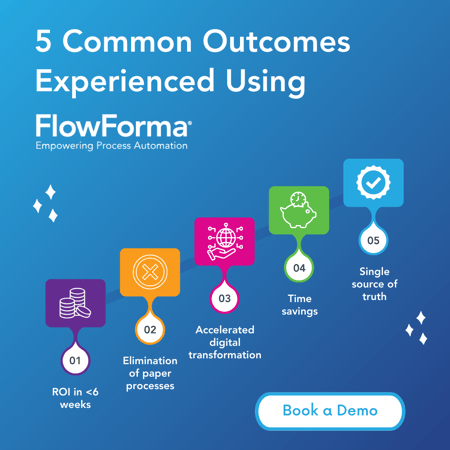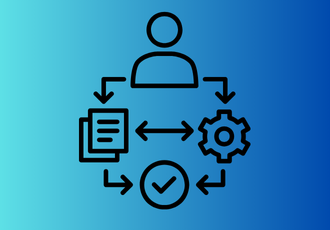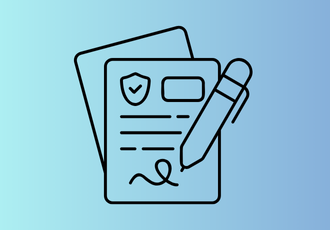With UK Public procurement updated in October 2024, it is timely to consider how an automated procurement process will utilise technology to simplify the acquisition process of goods and services. This includes digital requisitions, approvals, supplier management, and the creation of purchase orders, thereby minimizing manual tasks.
The Procurement Regulations 2023 in the UK emphasizes transparency, efficiency, and fairness in the public procurement process. Digital Process Automation (DPA) plays a crucial role in supporting adherence to these regulations.
I'd like to dig deeper in this blog to uncover the impact of Digital Process Automation (DPA) for the procurement of goods and services.
What is Procurement Automation?
Procurement automation is the use of technology and software to streamline and simplify the procurement process. It involves automating tasks like purchase requests, approvals, vendor selection, order tracking, and invoice processing.
By reducing the need for manual input, procurement automation helps businesses save time, minimize errors, and improve efficiency.
This makes the entire procurement cycle more transparent, efficient, and cost-effective, allowing organizations to focus on more strategic activities rather than getting bogged down by routine, repetitive tasks.
Processes That Can Be Automated in Procurement
Creating Purchase Requisitions
-
Automated Request Forms: Standardised digital forms ensure completeness and accuracy.
-
Approval Process Workflows: Automated routing of requests for necessary approvals, reducing delays and enhancing process efficiency.
Creating Purchase Orders
-
Purchase Order Creation: Automated conversion of approved purchase requisitions into purchase orders.
-
Approval and Dispatch: Streamlined approval workflows and automatic dispatch to suppliers.
Supplier Relationship Management
-
Centralized Database: Automated maintenance of a centralized, up-to-date supplier database.
-
Compliance Checks: Automated compliance checks during supplier onboarding and regular intervals.
Receipt of Goods and Services
-
Automated Acknowledgment: Digital systems for recording receipt of goods/services, ensuring timely updates.
-
Quality Checks: Automated workflows for quality inspections and approval.
Matching Requests to Orders to Receipts
-
Three-Way Matching: Automated matching of purchase requests, purchase orders, and receipts to ensure consistency and accuracy.
-
Discrepancy Alerts: Automatic alerts for any discrepancies between requests, orders, and receipts.
Vendor Management
-
Performance Tracking: Continuous automated tracking of vendor performance against key metrics.
-
Risk Assessment: Automated assessment of vendor risks based on performance and compliance data.
Communication Between Stakeholders with Automatic Notifications
-
Real-Time Updates: Automated notifications keep all stakeholders informed of procurement status and changes.
-
Collaboration Tools: Integrated communication platforms facilitate collaboration among procurement teams and stakeholders.
Automatic Documentation of Procurement Activities
-
Audit Trails: Comprehensive records of all procurement workflow facilitate easier auditing and investigations.
-
Regulatory Compliance: Ensures that all necessary documentation is maintained for compliance with relevant laws and regulations.
Data-Driven Decision Making
-
Historical Data Analysis: Access to accurate historical data allows for better forecasting and strategic planning.
-
Performance Metrics: Continuous monitoring and reporting of procurement effectiveness and supplier performance.

Benefits of Procurement Automation
1. Increased Efficiency and Speed:
-
Automated Workflows: Reduce manual effort, speeding up the procurement cycle.
-
Reduced Errors: Automation minimizes human errors in data entry and document processing. We will see some statistics later in the document to support this.
2. Cost Savings:
-
Operational Cost Reduction: Lower administrative and operational costs through streamlined processes.
-
Better Negotiations: Enhanced data analysis capabilities lead to more informed and favorable negotiations. Collecting data over time will solidify future decisions.
3. Improved Compliance and Risk Management:
-
Regulatory Adherence: Ensures procurement activities comply with relevant regulations, reducing the risk of penalties. Visibility of each step in the process and highlighting irregularities will improve and maintain compliance.
-
Audit Trails: Automated documentation provides a clear audit trail for all procurement activities. If there are queries, an organization needs to be able to track each step in the process.
4. Enhanced Transparency and Accountability:
-
Real-Time Tracking: Real-time visibility into procurement activities enhances accountability and decision-making for all transactions, current and historical.
-
Stakeholder Communication: Automated notifications and updates keep all stakeholders informed. No surprises please – everybody hates surprises!
5. Data-Driven Decisions:
-
Advanced Analytics: Access to historical procurement data allows for better forecasting and strategic planning. The only way to accomplish this is to gather data on each process and activity – the only time to start gathering this data is NOW.
-
Performance Metrics: Continuous monitoring of supplier performance and procurement effectiveness. This leads to greater satisfaction among all parties.

Challenges of Procurement Automation
1. Integration with Existing Systems:
Ensuring seamless integration with current ERP, CRM, and other enterprise systems can be complex.
2. Change Management:
Adapting to new automated processes requires a cultural shift and can meet resistance from employees. Remember it’s not just new software, it’s a new way of working.
3. Data Quality and Management:
Maintaining the accuracy and consistency of data used in automated processes is crucial. The only way to do this is by have tight rules/guardrails surrounding all digital inputs and outputs.
4. Security and Privacy:
Protecting sensitive procurement data from breaches and ensuring compliance with data protection regulations. When you go down the digital route, you need to own the data and have it well protected.
Features to Choose in Procurement Automation Software
1. Workflow Automation:
Configurable workflows for various procurement processes, ensuring consistency and efficiency. The processes need to adhere to how you do business – this will lead to greater adoption.
2. Integration Capabilities:
Seamless integration with other enterprise systems like ERP, CRM, and financial systems. Utilize existing information where possible. Nothing more irritating than the re-entry of information
3. Analytics and Reporting:
Advanced analytics for spend analysis, supplier performance tracking, and compliance reporting.
4. User - Friendly Interface:
Intuitive interfaces facilitate ease of use and quick adoption by users.
5. Scalability:
Scalable solutions that can grow with the organization’s needs.
6. Security Features:
Robust security measures to protect sensitive data and ensure compliance with regulations.

Adhering to the UK's Procurement Act of 2023 with DPA
-
Creating Purchase Requisition:
-
Standardized and Complete Forms: Ensures all required information is included, aligning with regulatory requirements.
-
Automated Approval Routing: Ensures all requests are reviewed and approved by the appropriate authorities, maintaining accountability.
-
-
Creating Purchase Orders:
-
Consistent and Accurate Purchase Requisitions: Automated generation and dispatch of purchase orders ensure consistency and reduce errors.
-
Audit Trails: Provides a clear record of all approvals and modifications, facilitating compliance.
-
-
Supplier Information Management:
-
Centralized and Up-to-Date Database: Ensures compliance with regulatory requirements for supplier information.
-
Regular Compliance Checks: Automated checks ensure suppliers meet regulatory and contractual obligations.
-
-
Receipt of Goods and Services:
-
Timely and Accurate Records: Ensures receipt records are promptly and accurately maintained, aiding compliance.
-
Quality Control Workflows: Automated processes ensure that received goods/services meet required standards.
-
-
Matching Requests to Orders to Receipts:
-
Automated Three-Way Matching: Ensures consistency between purchase requests, orders, and receipts, reducing discrepancies.
-
Discrepancy Management: Alerts for discrepancies enable timely resolution, maintaining compliance.
-
-
Vendor Management and Supplier Relationships
-
Performance Monitoring: Continuous tracking of vendor performance ensures adherence to contractual obligations.
-
Risk Assessment: Automated risk assessments identify potential compliance issues, enabling proactive management.
-
-
Communication with Stakeholders:
-
Real-Time Notifications: Keeps all stakeholders informed, ensuring transparency and accountability.
-
Collaboration Tools: Facilitate effective communication and collaboration among all involved parties.
-
-
Automatic Documentation:
-
Comprehensive Records: Automated documentation of all procurement activities provides a clear audit trail.
-
Regulatory Compliance: Ensures all necessary documentation is maintained in compliance with the Procurement Act.
-
-
Data-Driven Decision Making:
-
Historical Data Analysis: Access to accurate historical data allows for better forecasting and strategic planning.
-
Performance Metrics: Continuous monitoring and reporting of procurement effectiveness and supplier performance.
-
What are the Statistics to support the Automation of Procurement Processes
The shift towards automated digital procurement is supported by numerous statistics that highlight the inefficiencies and risks associated with manual procurement processes. Here are some key statistics that demonstrate the benefits of digital process automation in procurement:
Efficiency and Cost Savings
-
Time Savings: According to Deloitte, organizations can reduce procurement cycle time by up to 50% with automation.
-
Operational Cost Reduction: Automated procurement processes can reduce operational costs by 30-50% compared to manual processes according to McKinsey & Company.
-
Manual Errors: Manual data entry is prone to errors, with error rates averaging around 1% to 5% according to Bains & Company. Automation can reduce these errors significantly, leading to more accurate procurement processes.
 Compliance and Risk Management
Compliance and Risk Management
-
Audit and Compliance: Automated systems improve compliance with regulatory requirements and internal policies, reducing the risk of non-compliance penalties by up to 55% according to Gartner.
-
Fraud Prevention: Automation helps in reducing procurement fraud. As reported by EY, the Association of Certified Fraud Examiners, has stated the use of data monitoring and automated analysis techniques experience 52% less fraud loss compared to those that do not.
Supplier Management and Performance
-
Supplier Onboarding Time: According to the Association of Certified Fraud Examiners, Digital procurement can reduce supplier onboarding time by up to 70%, allowing organisations to quickly adapt to new supplier relationships and market changes.
-
Supplier Performance Tracking: PWC reports that automated systems can continuously monitor supplier performance, leading to an increase in supplier compliance rates by 30-40%.
See how FlowForma Copilot can build supplier onboarding processes in minutes with the power of agentic AI.
Spend Management and Analytics
-
Spend Visibility: Organisations with automated procurement processes report up to 80% greater visibility into spend data, facilitating better budget management and cost savings according to Forrester Research.
-
Cost Savings: According to The Hackett Group, companies that implement automated procurement solutions can save between 5% and 15% on their procurement spending due to better spend analysis and strategic sourcing.
User Experience and Adoption
-
User Adoption: User-friendly automated procurement systems can increase user adoption rates by up to 60%, as employees find it easier to use compared to manual systems. (*Spend Matters, "The ROI of Procurement Automation")
Real-World Examples
-
IBM: IBM reported saving $100 million annually by automating its procurement processes, demonstrating significant cost savings and efficiency improvements.
-
Cisco: Cisco automated its procurement processes and reduced procurement cycle times by 40%, showcasing the speed and efficiency gains from automation.
What Next - Are You Ready to Automate Your Procurement Process
Should your organization choose off-the-shelf Procurement automation software or create a bespoke solution using a Business Process Automation platform?
When an organization is selecting a digital procurement automation solution, several key decision points must be considered. The choice between customizing a Digital Process Automation (DPA) tool to fit specific procurement process procedures versus purchasing an off-the-shelf procurement process system involves evaluating the organization's needs, resources, and strategic goals.
It's clear that leveraging automation software makes sense but important to weigh up what will work best for your procurement lifecycle requirements.
Decision Points for Selecting a Digital Procurement Automation Platform
1. Understanding Organisational Needs
-
Process Complexity: Assess the complexity of current procurement processes. Highly complex and unique processes might benefit more from a customizable DPA tool.
-
Scalability Requirements: Determine if the platform needs to scale with the organization’s growth.
-
Integration with Existing Systems: Consider how well the new platform will integrate with existing ERP, CRM, and other enterprise systems.
2. Evaluating Procurement Automation Features and Functionality
-
Core Features: Ensure the platform includes essential procurement automation features like automated purchase requests, approval process, contract management, order processing, supplier management, spend analysis, compliance monitoring, and reporting.
-
Customization Needs: Evaluate the need for customization. Custom DPA tools offer flexibility to tailor processes exactly but require more resources.
-
User Experience: Consider the user interface and ease of use, which impacts user adoption and efficiency.
3. Budget and Resource Allocation
-
Initial Investment: Compare the costs of purchasing a customizable DPA tool versus an off-the-shelf procurement automation system.
-
Ongoing Costs: Consider ongoing maintenance, support, and upgrade costs.
-
Resource Availability: Assess internal capabilities for implementing and maintaining a custom solution versus the convenience of vendor support for off-the-shelf systems.
4. Implementation Timeline
-
Time to Deploy: Off-the-shelf systems typically have faster implementation times compared to custom solutions.
-
Customisation Time: Custom DPA tools require more time for configuration and testing.
5. Vendor Support and Ecosystem
-
Vendor Reputation: Evaluate the reputation and reliability of vendors for both custom DPA tools and off-the-shelf systems.
-
Support Services: Consider the level and quality of support offered by vendors, including training, troubleshooting, and updates.

6. Compliance and Security
-
Regulatory Compliance: Ensure the procurement automation platform supports compliance with relevant procurement regulations and standards.
-
Data Security: Assess the security measures in place to protect sensitive procurement data.
Customizable DPA Tool vs. Off-the-Shelf Procurement Automation System
Customizable DPA Tool
Advantages:
-
Tailored Solutions: Custom DPA tools can be configured to precisely match the organization's unique procurement process and requirements. The organization can also decide to concentrate on digitizing one process at a time to get user feedback. Use that feedback to make sure the subsequent processes have a greater alignment with expectations from day one.
-
Flexibility: Offers greater flexibility to adapt to changing needs and processes. Requirements change over time – the ability to quickly adapt to those needs cannot be underestimated.
-
Integration: Can be better integrated with existing systems and procurement workflows.

Disadvantages:
-
Longer Implementation: Custom solutions often take longer to implement due to the need for extensive configuration and testing.
-
Resource Intensive: Requires internal resources and expertise for implementation and maintenance.
Off-the-Shelf Procurement Automation System
Advantages:
-
Faster Deployment: Generally quicker to implement with pre-configured settings and best practices.
-
Lower Initial Cost: Often has a lower initial cost compared to custom solutions.
-
Vendor Support: Comes with vendor support for implementation, training, and ongoing maintenance.
-
Proven Solutions: Utilises industry best practices and proven methodologies.
Disadvantages:
-
Limited Customisation: May not fully align with unique business processes and might require adjustments to existing procurement workflows. Getting users to align their operations to the software’s operations can take time leading to push-back and poor adoption.
-
Potential Integration Issues: May face challenges integrating with existing systems, especially if the organization has complex requirements.
-
Scalability Concerns: Off-the-shelf solutions may not be as easily scalable or adaptable to future needs. Hidden costs from the need to scale software across an organization needs to be considered.
Finally...Should You Automate Procurement Processes?
Digital Process Automation profoundly impacts procurement processes by increasing efficiency, reducing costs, reducing repetitive tasks and data entry errors, improving compliance, and enhancing transparency. By automating key processes like creating purchase requests and orders, managing supplier information, and ensuring compliance with the UK's Procurement Act of 2023, a procurement team can achieve significant improvements in their purchasing process. The features of DPA tools, such as workflow automation, real-time notifications, and advanced analytics, enable procurement professionals to make data-driven decisions, maintain accurate records, and ensure regulatory compliance.
The statistics clearly illustrate the substantial benefits of procurement process automation, including time and cost savings, improved compliance and risk management, better supplier performance tracking, enhanced spend visibility, reduced manual data entry errors, and higher user adoption rates. These benefits support the need for procurement teams to transition from manual to automated processes to remain competitive and efficient in today’s market.
The choice between a customizable DPA tool and an off-the-shelf procurement system depends on several factors, including the organization's specific needs, budget, timeline, and internal capabilities. Organizations with unique, complex processes and sufficient resources might benefit more from a customizable DPA tool. Conversely, those seeking quicker deployment, lower initial costs, and robust vendor support might find an off-the-shelf system more suitable.
Ultimately, a thorough assessment of current processes, future needs, and available resources will guide the decision, ensuring the chosen platform aligns with the organization’s strategic goals and operational requirements.
Take advantage of a Free Trial of the FlowForma Process Automation tool to uncover how procurement automation streamlines your entire procurement department. I could talk about how a DPA solution will enhance your procurement performance all day but don't take my word for it. I would be happy to refer you to some of our notable clients who gush about procurement automation.
.jpg) By
By 




